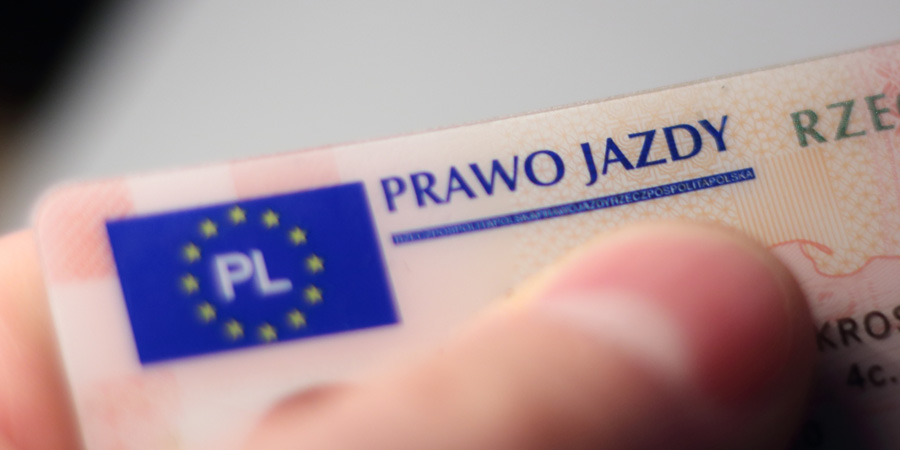Since 19 January 2013, EU member states have been using one European Driving Licence that is identical to credit cards. It has a photograph and is secure against fraud. This replaces the 110 distinct national driving licences that were previously in use.
It may surprise you that France which is Britain's closest neighbour, has a very different system of learning to drive.
Medical Examination
In some European countries, it is required for drivers to undergo medical tests in order to renew their licenses to drive after reaching a certain age. The reason is to ensure that the driver is able to still safely operate the vehicle and is not suffering from a serious health problem. However, some experts have raised doubts about the advantages of these tests. They warned that these assessments could cause older people to fear driving, and could result in more accidents.
While some countries require such exams, others do not. The European Union allows its member states to determine the guidelines for evaluating a driver's medical ability to operate, which results in a range of rules. For example, in Hungary the family physician is able to determine a driver's ability to drive, whereas in Austria only specialists can carry out the exam.
The European Parliament is considering the possibility of requiring health examinations for drivers who are older than 70. Many transport experts such as Bernd Reuther of the FDP parliamentary party, reject this idea. They argue that it would be much more sensible to focus on the application of technology, like intelligent speed assistance, reverse detection with cameras or sensors and alerts in case of driver drowsiness, distraction or fatigue. This could be done in conjunction with the existing self-assessment forms, which are required when applying for a driving licence or renewing it.
In countries that do not have mandatory medical exams This is a different way to improve road traffic safety. These checks can be carried out in conjunction with the current licensing process or at certain intervals. This can also be used to detect health issues like epilepsy, heart disease or diabetes which could affect the ability to drive. However, a comprehensive program of screening is not feasible without the cooperation of the insurance companies and health authorities, and a large amount of administrative work. The cost of these tests can be a major expense. Therefore, it is crucial to determine the right criteria and intervals for the medical tests. It is crucial to remember that cars can be equipped with features like automatic emergency braking systems and forward collision warnings that help prevent accidents caused by driver distraction or drowsiness.
Theory Test
The Theory Test is designed to test a student's understanding of the rules and regulations. It is crucial that new drivers have a thorough knowledge of these rules, because they are the basis for safe driving practice. The test is conducted on a computer, and the questions are drawn from a set of questions. The test is regularly updated as new laws on driving are implemented. The test is designed to be as fair as it can be and must not be a simple test for anyone to fail. The latest figures, published on the GOV website shows that 45% of students pass their theory test.
The theory test consists of two parts that are taken simultaneously with multiple choice questions as well as perceptual tests for hazard. You must pass both of these to be awarded a certificate. You can schedule your test online, via phone or post. The fee is PS24. On the day of the test, you will need to bring your photocard's provisional license in both parts. If you do not have both of these you won't be permitted to take the test and forfeit the booking fee.
You have 57 minutes to answer 50 multiple choices. You must score at least 43 points out of 50 to pass the test. You are able to review your answers as often as you like before the end of the test.
There are many different books and online study materials for the Theory Test. However, it is best to make use of official DVSA revision materials. It is available for purchase from the DVSA shop and some libraries in the public sector stock it. There is also an official, free learning portal and practice tests on the DVSA website.
If you are unhappy with the result of your test you are entitled to appeal. You can appeal by speaking to an administrator at the test center prior to you leave, or by filling out an application form that is available at all test centres. The DVSA will review the test and issue a revised score within 10 business days. If you appeal and are successful the test will be modified.
Practical Test
A test on the road will test your ability to drive safely and autonomously in compliance with the laws, Ile Kosztuje Prawo Jazdy Na Motor taking into consideration other road users and road conditions. It requires you to prove that you are able to control the vehicle, understand the rules and regulations for driving and have a good eye awareness, self-insight and understanding of the risks.
During your test, the examiner will ask to you complete a series of exercises. The examiner will choose the route you will follow that is different from your previous driving lessons. It must also include a variety of roads and traffic conditions.
You'll pass the driving test if you make 15 minor mistakes or less, but no major or dangerous ones (majors). A minor error is one that isn't potentially dangerous like a hesitation or the position of your hands on the steering wheel - If it happens only once, you will not fail a test for it, but if you keep making the same mistake, it could be a major error. A serious error is one that puts the examiner, you or the public at risk which will cause an instant failure.
You will be required to listen to the instructions of your examiner during the test. In certain countries, the test could include night driving or a skid-pan test. Remember that your examiner is trying to help you to pass the test, so they will not ask you to do something illegal or dangerous.
Numerous studies have demonstrated that certain groups, for instance women are more likely than other groups to fail their driving test. However, prawo jazdy na autobus prawo jazdy am am (writes in the official pinshape.com blog) further research is required to understand what causes these differences and how they can be addressed.
Some countries have standardised their test content by creating a booklet that lists the elements that are tested and guidelines for examination. Certain countries are more flexible in the testing process, but they still must include an independent driving test, a safety test and a controlled stopping.
Hazard Perception Test
The Hazard Perception Test is an essential part of the test in theory, since it evaluates your ability to identify emerging dangers on the roads. This includes other cars, cyclists and pedestrians, as well as animals, changing weather conditions, road markings and other road users. It is essential to be able to anticipate what other road users may do, as it can ensure that everyone is safe on the road. The test for hazard perception consists of 14 video clips, each lasting for approximately one minute. The videos are shot from the driver's viewpoint and display roads with at least one danger that is developing. During the test, you need to click your mouse whenever you see the developing hazard, and the DVSA will inform you if your choice is correct or not. If you click on a danger before it is believed to have developed, you will receive a zero score for that clip.
The hazard perception tests was developed because many people have difficulty scanning the road to identify potential hazards. The test measures how quickly you can detect an emerging hazard. It has been demonstrated that experienced drivers can process information more quickly. It is also possible to develop the ability to detect hazards which is why tests for hazard perception are so essential for those looking to drive of a car.
Research has also shown that the perception of danger is influenced by different factors, such as the age and experience of the driver. Inexperienced drivers answered questions about the recognition of hazards more slowly and with less accuracy while experienced drivers who had less accidents were quicker and more precise. Drivers who were trained were also more vigilant and were able to spot more dangers.
It is vital that you prepare for your test on hazard perception by watching practice videos and driving regularly. You're more likely to pass your hazard-perception test if you prepare for it. You will be glad that you did, since having a solid knowledge of hazard perception will aid in keeping you safe on the road.









